Gift of endurance: Emma Flukes, long-distance cycling powerhouse

“I have never experienced the sensation of literally wanting to crawl under a tree and die with such frequency and ferocity as I have over the past couple of days,” wrote Emma Flukes, one of Australia’s premier long distance cycling athletes, on her Instagram (@oneflukeshot) back in September 2018.
She was in the middle of her first-ever endurance bike ride, the 2018 Race to The Rock – 3602 km from Cockle Creek in far-south Tasmania to Uluru in the Northern Territory. And while it might not sound like it by her reflections at the time (nor, I imagine, have felt like it), that was the adventure that kickstarted a love of bikepacking that would see Emma, within just a couple of years, become one of the most renowned and experienced endurance cyclists in the country.
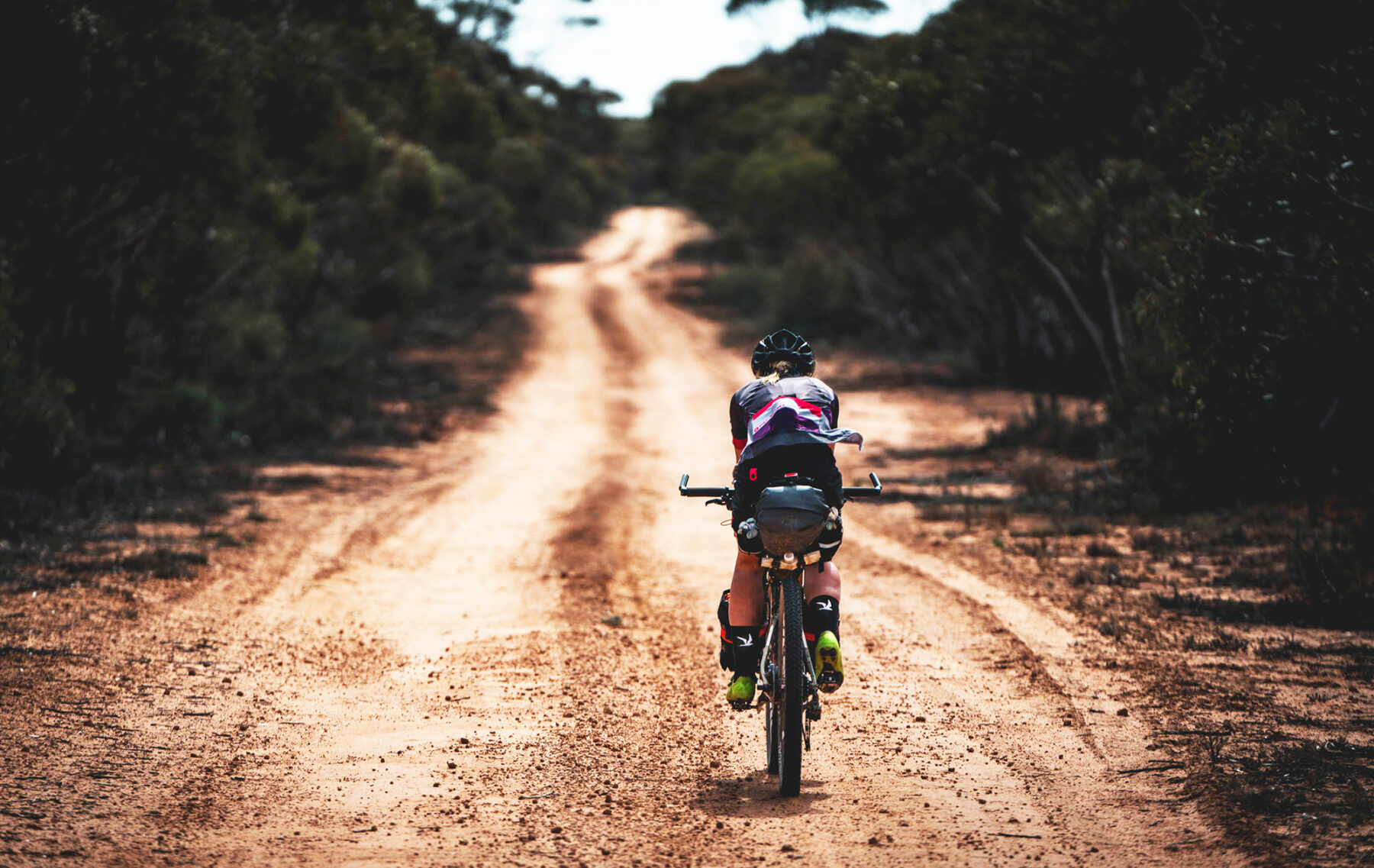
A marine ecologist by day, Hobart-based Emma finished her PhD in environmental science back in 2015, when she was 24 years old. While she’d always been active, including as an internationally competitive sailor as a teen, cycling had never been her sport of choice. “I hadn’t been on a bike since I was about 10 years old,” she says.
Like riding a bike
However, towards the end of her PhD – on the insistence of a mate – Emma started dabbling in a bit of bike riding. She started out on a road bike – as long-distance mountain biking wasn’t really on the radar at the time, at least locally, she says. (“There was this weird perception that mountain bikes were too slow.”)
But before long, Emma realised sharing the road with cars wasn’t her idea of fun. “It’s so much nicer being in the bush, so I just started taking my dual suspension, cross-country bike for all-day rides,” she says. Her burgeoning interest soon extended to “dot-watching” – following the GPS locations of racers in big international events like the US Tour Divide. Then she heard that the 2018 Race to the Rock event would, serendipitously (and for the first and only time) kick off in her home state.
Emma says it took a while to admit to her friends about her new-found desire to ride unsupported half-way across the country – but finally she plucked up the courage to confess to her partner (who she says is a ‘normal’ road cyclist and mountain biker).
“He was like, well, we’d better get you a bike then.”
Homemade gear solutions
Emma says finding the right bike for the race wasn’t straightforward (she’s petite, with a short torso). Building a custom bike was out of the budget, so she instead found a small enough previous-model Canyon hardtail “in the bargain bin”. Then she had to figure out bike bags – there weren’t a lot available in Australia at the time, with the bikepacking scene still fresh.
“There were no neat solutions, so it became this real homemade exercise,” she says.
A month of forum research and eBay-hunting later, Emma had her cycling set-up ready to go and took it on a practice run to Ouse – a small town in Tassie’s central highlands. “I did that, slept on a park bench, and didn’t die. I thought, yeah, this is fine.”
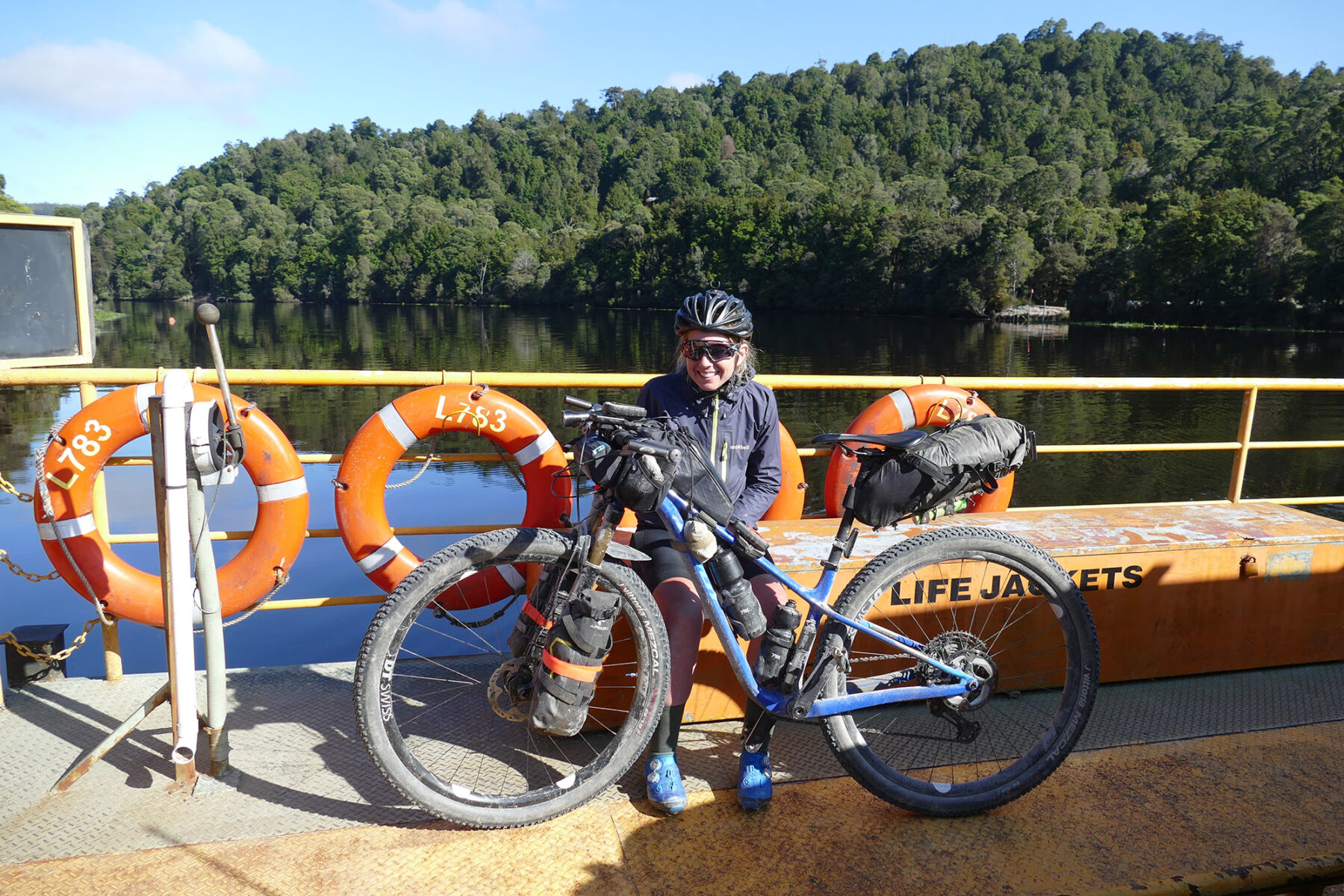
For the Race to the Rock, Emma gave herself two days (sans sleep) to ride across Tasmania from Cockle Creek to Devonport in time to catch the Spirit of Tasmania across the Bass Strait. She missed the ferry and had to hang out for the day until the next one. In the end it took her a total of 18 days to reach the Rock – making her the last, but also one of only four out of nine starters, to finish the epic journey.
Emma had ridden through painful ITB (iliotibial band) twangs and grappled with extreme isolation and sleep deprivation that took her to some dark places – like thinking “when I die tonight, I’m closer to Finke than Oodnadatta. I don’t want the recovery to be confused by a border issue,” she wrote in that same Instagram post. However, she returned from the experience not traumatised, but galvanised.
“I often think back on [that trip], and if I was to do it again, it would be so easy now,” she says.
Emma’s gift to Tassie riders
The next year, in 2019, Emma was back on the mainland to compete in a 400 km endurance cycling race in Victoria. She had also started spending a lot more time bikepacking around Tassie on her own – and was soon looking back on that Tassie leg of the Race to the Rock thinking “surely that can’t be the best Tasmania has to offer”.
“I started exploring more. And because I enjoy racing and geeking out with maps, I thought, ‘I’ll put together this route, and I’ll put on an event’.”
The event was called the Tassie Gift and it kicked off in November 2019. Described as “a scenic trip to Hell” the unsupported (and “unsanctioned”) 1,796 km bikepacking route is almost entirely off-road through Tasmanian wilderness. It starts and finishes in Hobart, kicking off with a long climb up kunanyi/Mt Wellington before traversing the central and cradle plateaus to Arthur River, heading back down the west coast through takayna/The Tarkine, before an almost mirrored loop on the eastern half of the state, taking in Derby, St Helens, and Orford.
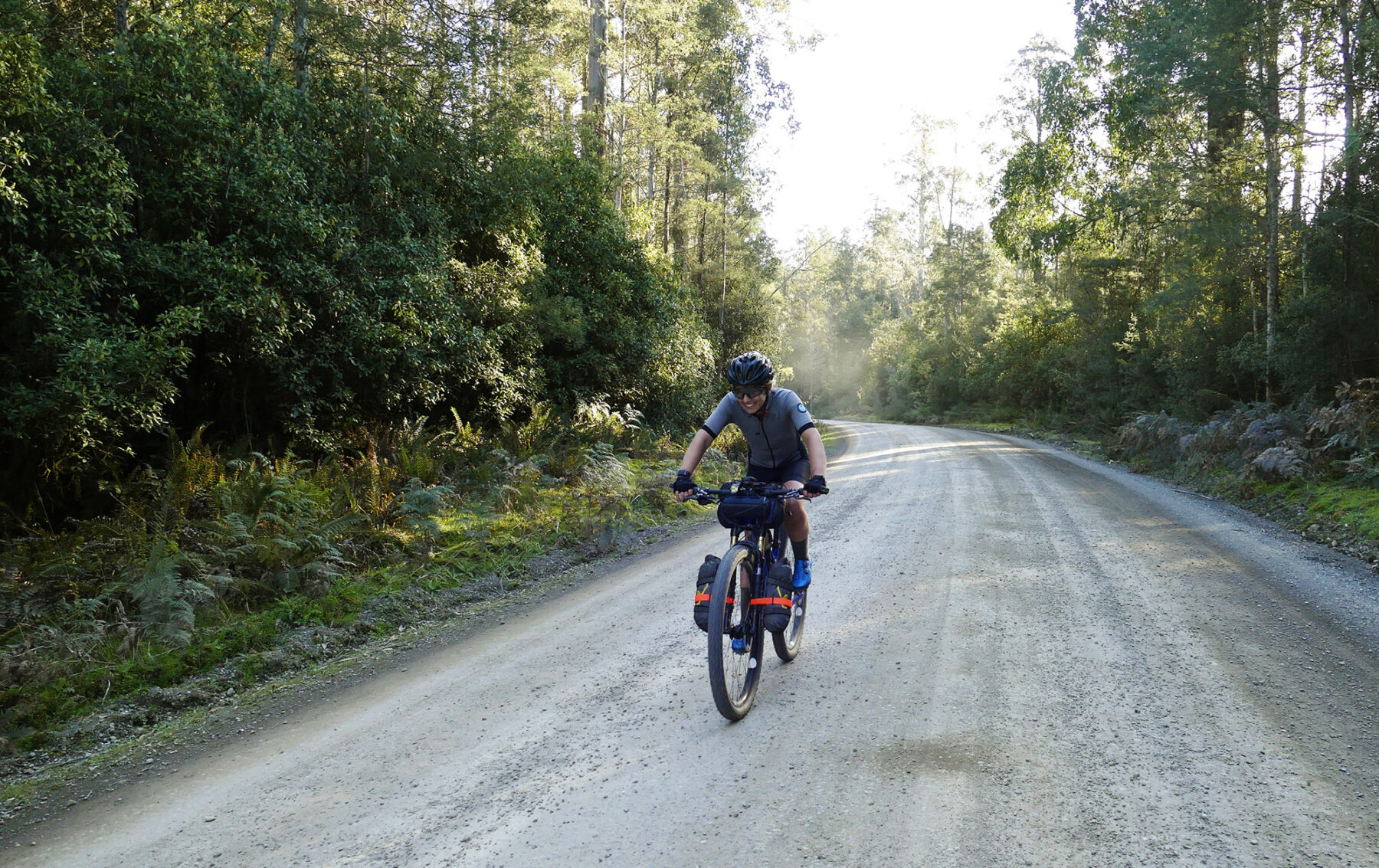
In establishing the route, Emma says she not only considered the best of Tassie’s off-road tracks, but also drew on her experiences from previous races. For example, she says she hates when a section is particularly sketchy or gruelling for no apparent reason, with a more straightforward route in the same area. “To me that feels gratuitous. Like, here’s this really shitty section just because we want to make it adventure-y,” she says.
“With the Gift, if there’s going to be hard stuff, then it has to exist for a good reason, like an amazing view. And I’ve had that feedback from past riders who say, ‘we started to expect that when the going got tough, you knew there was going to be a big reward’”.
Emma finished first on the inaugural Gift in 2019 (“I feel like a bit of a wanker saying I won my own event!”), then in the second event in 2020 she says she had a great “battle” with Tasmanian multi-sport and adventure athlete Alex Hunt, who finished first in the end – Emma just a few hours behind him.
Grave decisions
Fast-forward a few months ahead of the fourth annual Gift, in around July 2022, and Emma caught a virus (“probably COVID”), her symptoms deteriorating quickly. By August she was diagnosed with an autoimmune disorder called Graves’ disease, which causes the immune system to attack the thyroid – presenting a range of symptoms that differ among individuals.
“You feel like you’ve had 10 coffees,” is how Emma describes her symptoms. “You’ve got the shakes, you’re not focused. You’re basically in a state of fight or flight, but permanently. And then it’s combined with this thing called thyrotoxic myopathy – where your muscles just stop working.”
The 2022 Race to the Rock was coming up, and Emma had liked the sound of the proposed Sydney to Adelaide route – but her health wasn’t cooperating. Instead, she decided to try a shorter bikepacking trip closer to home, in southwest Tassie, to see how she fared.
“I was not alright,” she recalls. “I was having to stop just to breathe and get my heart rate down.”
However, by the time the Tassie Gift did come around in November that year, Emma was managing her symptoms with medication, and she decided she was up for the race. Her heart rate – the main concern – did settle a few days in, but that didn’t end up being the main challenge she faced on that event, which she calls “a comedy of errors”.
Pain in the neck
Shermer’s neck is a condition that only affects endurance cyclists. Named after Michael Shermer, who first experienced it in the 1983 Race Across America, it presents as pain and extreme weakness of the neck muscles and is a direct result of the physical challenges of long-distance cycling.
While the cause of Shermer’s neck – which appears to impact endurance cyclists at random – is unknown, Emma wonders whether going over the handlebars on a rough part of track in the central highlands (followed by a few sleepless nights) created the conditions for the bout that hit her.

She recalls riding through the night, helmet light craning to see through thick fog on the corrugated Western Explorer track through the Tarkine Wilderness. “It’s a stressful condition for my neck, but I’ve done that many times,” she says. Then not long after, riding on a four-wheel drive track towards the West Coast mining town of Zeehan, her neck muscles started cramping.
“I called my partner and I realised that my voice was all messed up because everything was spasming,” she says.
Emma found she could manage the cramps if she held her head in a certain position and ended up having to walk her bike most of that track – unless she was on an uphill climb, which changed her cycling positioning enough to allow her spine to better support her neck.
In hindsight, Emma says she probably should’ve looked for a neck brace or something to help when she got to Zeehan – but she had hoped the condition would resolve itself. “The problem was, as soon as I got off the bike, there was no indication anything was wrong,” she says. But after a couple of hours back on the bike, Shermer’s was back.
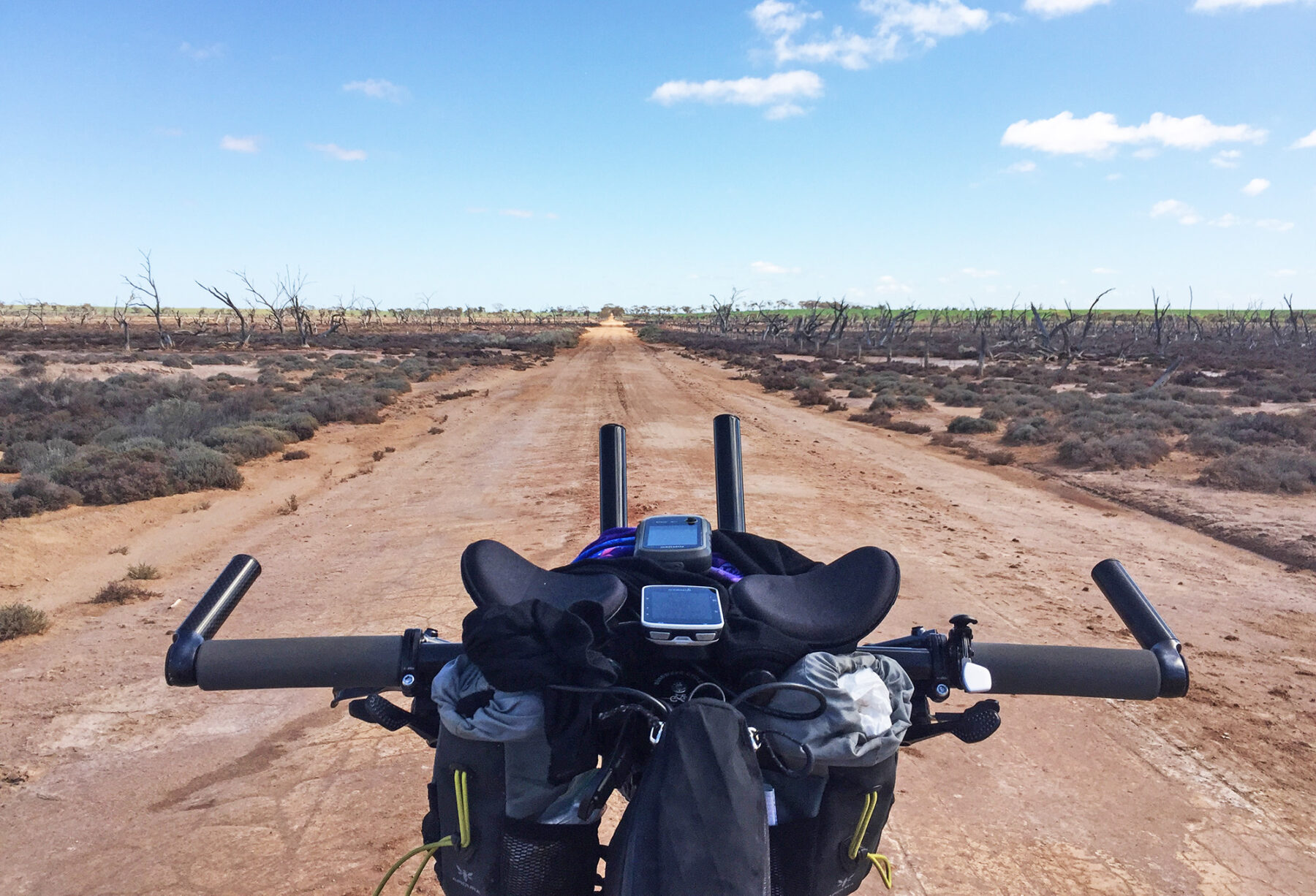
Luckily, she was soon on a long smooth section of road, which meant she could arrange herself to support her neck – but with no pharmacy for 500 km in either direction, Emma knew she had to think of solutions. “I ended up with this big bit of rubber, I think it was from a truck tyre, and I fashioned it into a sort of neck brace,” she says.
With her foraged truck-tyre neck brace plus a pulley system she devised by tying her helmet to her sports bra “like a marionette doll”, Emma made it to Longford in Tassie’s northern midlands, where she found a real neck brace (which she says helped, “maybe 20 per cent”).
“I just kept getting up each day and asking, do I want to do this? And I’d try one more day. I’m stubborn.”
Eventually she also changed the positioning of her handlebars, which was uncomfortable for her wrists, but helped her neck recover to the extent that she, incredibly, finished the race sans neck brace.
Pushing limits in cycling
Of course, endurance cycling for Emma is not all about enduring pain and discomfort – she’s stubborn but not masochistic. She loves that her bike enables her to explore hundreds of kilometres of changing landscape and terrain, and that “theoretically, I could just keep going forever. You just need food”.
She says cycling has not just taken her to beautiful corners of the country – she recently raced from Adelaide to Port Augusta, then “speed-toured” her way home via the Flinders Ranges – but has also honed her self-sufficiency and taught her patience and flexibility in tough situations (“which I wasn’t good at before, because I’m very type-A,” she says).
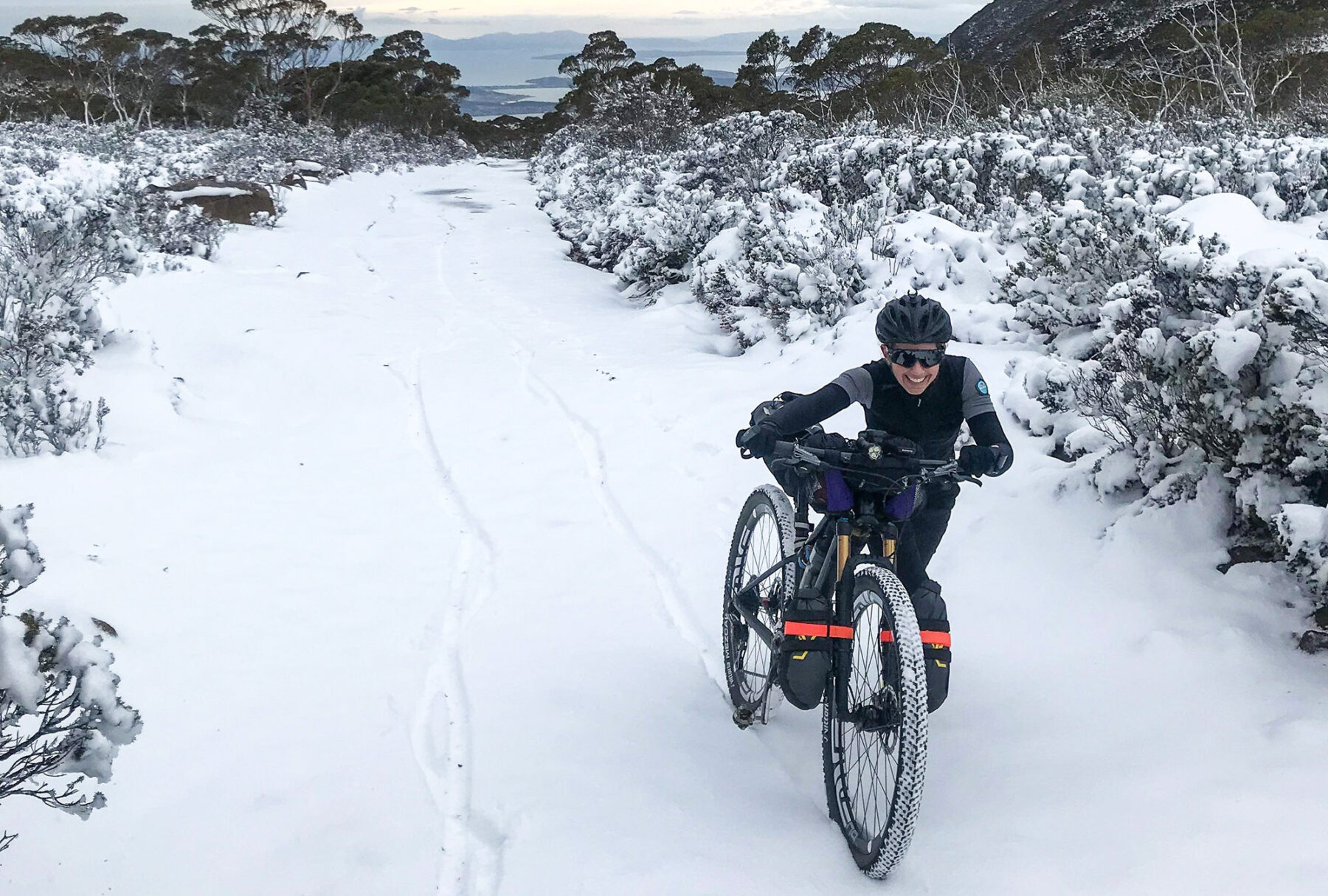
Emma doesn’t think you need to be an experienced cyclist to get into endurance bikepacking – she wasn’t, after all. Capability outdoors is helpful, but most important, she reckons, is self-reliance and flexibility. “The earliest DNFs are always the people who turn up with a big ego and big expectations,” she says.
“I’ve never been the slowest rider, but I’m not fast either,” she adds on her own cycling ability. “But I don’t feel that much different at the end of the day to at the beginning of the day.”
And while Emma’s Graves’ diagnosis presents a new normal, she will have to manage going forward, she says she will learn what that looks like by pushing her own limits to find out where they now lie.
The 2023 Gift saw misadventure strike again for Emma, who was a DNF after being struck by a bout of illness about 300km from home. However, the race itself was another success, drawing 30 riders from across the globe – 16 of whom made it across the finish line. But Emma has voiced concerns about the future of this cycling event, with its increasing popularity and attention bringing more red tape and bureaucracy, which she says is going to necessitate some “tough decisions’ in the coming months – but given the community support and enthusiasm for the race, she’s committed to find the right compromise so that the Gift can keep on giving.
For now, she’s gearing up for her next race – the 2024 Tour de Waipounamu, one of the great cycling experiences, which traverses the length of New Zealand’s South Island. “There’s plenty of rough terrain and bike carrying on that route, but I’m hopeful that’ll be a happy redemption ride,” she says.





